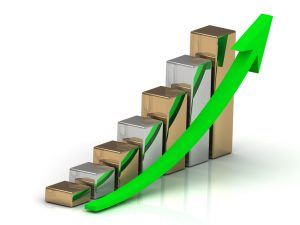How Investors Compare Gold and Silver Investments
Posted onThe precious metals sector is roaring higher in 2022 fueled by the Russian war in Ukraine, skyrocketing crude oil prices, a sinking stock market and inflation at 40-year highs.

As investors turn to precious metals as a portfolio risk diversifier, store of value over the long-term and a hedge against crisis – you may wonder – what’s the difference between investing in gold and silver? Before we highlight three differences, let’s take a look at the performance numbers. The precious metals sector has rocketed higher in the first quarter, while the equity market has fallen into a correction phase.
2022 Year-to-date performance
Winners
Palladium +53%
Platinum +15%
Silver +12%
Gold +9%
Losers
NASDAQ -16%
S&P 500 -11%
Dow -9%
Data as of March 9, 2022
Gold and silver are both rewarding investors with solid returns this year, with a modest silver out-performance. While gold and silver often trade in parallel, there are differences to consider.
Liquidity and Size
The gold market is one of the most deep and liquid markets in the world and is bigger than silver. This simply means it is easy to buy and sell gold at any moment in time. In 2019, the value of the global gold market was pegged at $24.5 trillion, bigger than the $4.4 trillion silver market, according to consulting firm CPM Group. The large size of the gold market means that major players can move large positions (buying and selling), without moving the price. For anyone trading smaller positions (and this applies to most individual investors), the liquidity isn’t an issue for either gold or silver. But, gold does take the edge in this category overall.
Volatility
In general, silver is considered to be a more volatile metal than gold. This simply means it can move faster than gold, which we’ve seen already in 2022 with silver’s out-performance. Volatility can be a double-edged sword – for short-term investors looking for quick gains – it can offer faster price appreciation. But, on the flip side, it could also erase those gains more quickly too.
Diversification
Both gold and silver bullion offer investors diversification properties – especially as they are both “hard” assets, versus “paper” assets like stocks, bonds or ETFs. However, gold again has the slight edge here over silver, as the latter is more connected to the business cycle. In addition to its value as a monetary metal, silver is widely used in manufacturing, electronic and construction. When industrial demand slows as economic growth weakens, that can tamp down demand for silver.
Meanwhile, gold is a long proven investment portfolio risk diversifier, in large part because gold has nearly zero correlation to movement in the stock market, according to a 2015 Journal of Managerial Finance research paper.
How to Measure Value
The gold/silver ratio is a time-honored method for investors to measure the relative value of these two precious metals. The ratio simply reveals the number of silver ounces needed to buy one ounce of gold. A high ratio is generally viewed as a signal that silver is undervalued relative to gold. That is what we’re seeing now.
Current Ratio: 76 oz. silver = 1 oz. gold
Historically, readings above 65 signal that silver is undervalued and is a strong buy signal for the metal. Silver continues to offer a great value to investors.
The Bottom Line
Gold recently scaled the $2,000 level, touching a new all-time high at $2,051 an ounce. Silver trades above $26 an ounce. Both precious metals are in a strong bull market cycle and offer opportunity for investors to protect and preserve their wealth. If you are exploring adding more protection to your portfolio, consider acting now before prices move even higher.
Want to read more? Subscribe to the Blanchard Newsletter and get our tales from the vault, our favorite stories from around the world and the latest tangible assets news delivered to your inbox weekly.











